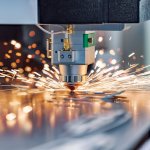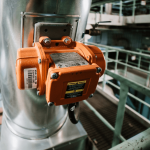Understanding the Key Components of Electric Motors in Electric Vehicles
In the ever-evolving landscape of transportation, electric vehicles (EVs) have emerged as a revolutionary force, reshaping the way we think about mobility and sustainability. In this blog, we’ll break down the components that make up electric motors within electric vehicles to provide the necessary power, control, and efficiency for them to run.
The Main Components of Electric Motors
Electric motors used in electric vehicles (EVs) consist of several components that work together to convert electrical energy into mechanical motion. The main components of electric motors in EVs include:
- Stator: The stator is the stationary part of the motor that houses the winding coils. These coils are responsible for generating a rotating magnetic field when electric current flows through them.
- Rotor: The rotor is the rotating part of the motor. It’s typically made of a series of permanent magnets or wound coils. The interaction between the rotating magnetic field from the stator and the magnetic field of the rotor generates the mechanical motion.
- Winding Coils: The stator and rotor both have winding coils. In the stator, these coils are arranged in a specific pattern to create the magnetic field. In the rotor, they can be wound around the core or consist of permanent magnets.
- Inverter: The inverter is an essential component that converts the direct current (DC) from the vehicle’s battery into alternating current (AC) needed for the motor. It also controls the frequency and amplitude of the AC power to regulate the motor’s speed and torque.
- Controller: The controller manages the operation of the electric motor and inverter. It receives input from the accelerator pedal and other sensors to determine the desired power output and adjusts the inverter accordingly. Modern controllers use advanced algorithms to optimize efficiency and performance.
- Cooling System: Electric motors can generate heat during operation, and efficient cooling is necessary to maintain optimal performance and prevent overheating. Cooling systems, such as liquid cooling, ensure the motor operates within safe temperature ranges.
- Bearings: Bearings support the rotor’s shaft and allow it to rotate smoothly within the stator. High-quality bearings reduce friction and mechanical losses, contributing to the overall efficiency of the motor.
- Housing/Casing: The motor is enclosed in a protective housing or casing that provides structural integrity and helps contain any heat or electromagnetic interference.
- Sensors: Sensors, such as position sensors, temperature sensors, and speed sensors, provide feedback to the controller about the motor’s performance and condition. This information allows the controller to make real-time adjustments for optimal operation.
- Shaft: The shaft is connected to the rotor and extends from the motor, providing the mechanical output that can be connected to the vehicle’s drivetrain.
- Power Electronics: This broader category includes components like capacitors, resistors, and various electronic circuits that work in conjunction with the inverter to manage the flow of electric power and ensure the motor operates efficiently.
- Regenerative Braking System: While not a direct part of the motor, the regenerative braking system is closely linked. It uses the motor as a generator during braking to convert kinetic energy back into electrical energy, which can then be stored in the battery for later use.
As electric vehicles become more mainstream and the technology continues to evolve, these components will evolve too. New materials, advanced algorithms, and breakthroughs in energy storage will keep pushing the boundaries of what’s possible, ushering in an era where electric vehicles are not just an alternative, but the norm.
Work with the Expert Team at Air & Hydraulic Equipment, inc.
Since 1971, Air & Hydraulic Equipment, Inc. has been providing unsurpassed products, expertise, and value-added services to a vast customer base that relies on hydraulic, pneumatic, electric, and automation processes throughout Tennessee, North Georgia, and Southwest Virginia.
Whether you’re interested in learning more about industrial automation or are in need of service and repair for your machine parts, our dedicated team of experts are here to help you.
Contact us today to learn more about our services.










